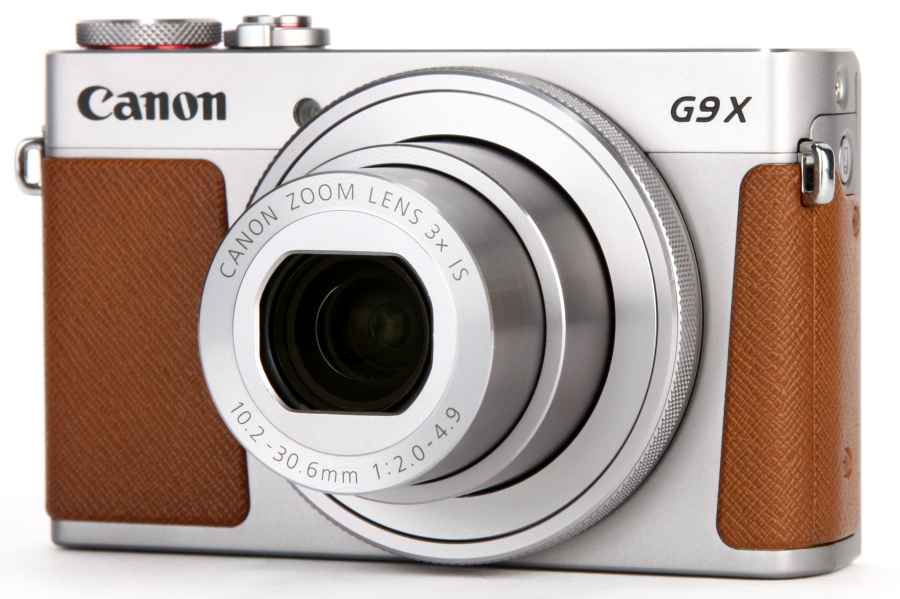Canon PowerShot G9 X review – Features

Like many recent fixed-lens compacts, including Canon’s own G3 X, G5 X and G7 X, the G9 X is built around a 20.1-million-pixel 1in CMOS sensor. It offers a sensitivity range of ISO 125-12800, and files can be recorded in both JPEG and raw formats.
The 28-84mm equivalent lens has a maximum aperture of f/2-4.9. While this looks impressively fast at wideangle, it drops off very quickly as you zoom, to f/2.8 at 35mm equivalent, and f/4 at 50mm. The lens includes a built-in 3-stop neutral density filter, which can be used for shooting with large apertures in bright light, or to slow down shutter speeds for increased motion blur in still images. Perhaps more importantly, it’s also useful to convey a more natural impression of motion during movie recording. The ND filter can be engaged manually by the user, or set to auto so the camera can use it whenever necessary.
Compared to other pocket cameras, though, the lens looks a little limited in terms of both range and aperture. For example the Sony Cyber-shot RX100 II has a longer 28-100mm equivalent f/1.8-4.9 zoom, and Canon’s own G7 X has a 24-100mm equivalent f/1.8-2.8 lens that’s both rangier and much faster. Essentially, this is the main trade-off Canon has made to achieve the G9 X’s slender frame. On a more positive note, the lens does at least offer the same range as the 18-55mm kit zooms that come with most APS-C DSLRs.
Continuous shooting is available at up to 6fps. This sounds pretty impressive, but this being Canon, it comes with some caveats. You’ll only get this speed shooting JPEG files, and furthermore, with focus and exposure fixed at the start of a burst. If you want the camera to refocus between frames the speed drops to a still-respectable 4fps, however if you wish to record raw images, it slows right down to less than 1fps. Compared to Sony’s RX100 II, which can shoot at 5fps in raw, this is embarrassingly slow. The saving grace is that the G9 X’s short lens doesn’t really lend itself to action shooting in the first place, so this lack of speed is much less of a concern than it is on Canon’s G3 X superzoom.
A full complement of exposure modes is available via a top-plate dial. Program, shutter priority, aperture priority and manual modes are available for enthusiast photographers, joined by an array of scene modes and full auto shooting for beginners. Canon’s somewhat gimmicky ‘Creative Shot’ mode also makes an appearance; this takes five shots with every press of the shutter button, applying different processing filters and compositional crops to each. Occasionally it might come up with something interesting.

The G9 X can of course record Full HD video at 1920×1080 resolution and 50fps or 30fps, with sound recorded via a pair of microphones beneath the top-plate. It’s possible to zoom and refocus the lens during recording. In most modes the camera controls exposure settings, but there’s a dedicated movie position on the top dial allows you to take full manual control. A nice touch is that the touchscreen can be used to adjust settings during recording, so no button or dial clicking spoils your soundtrack.
Wi-Fi connectivity is built-in, with Canon providing more functionality than most other brands. Naturally you can make a connection to a smartphone or tablet for sharing images or controlling the camera remotely, and there’s even a dedicated button on the side of the camera for this purpose. But it’s also possible to transfer images between Canon cameras, or print directly to a Wi-Fi enabled printer, if you have one.







